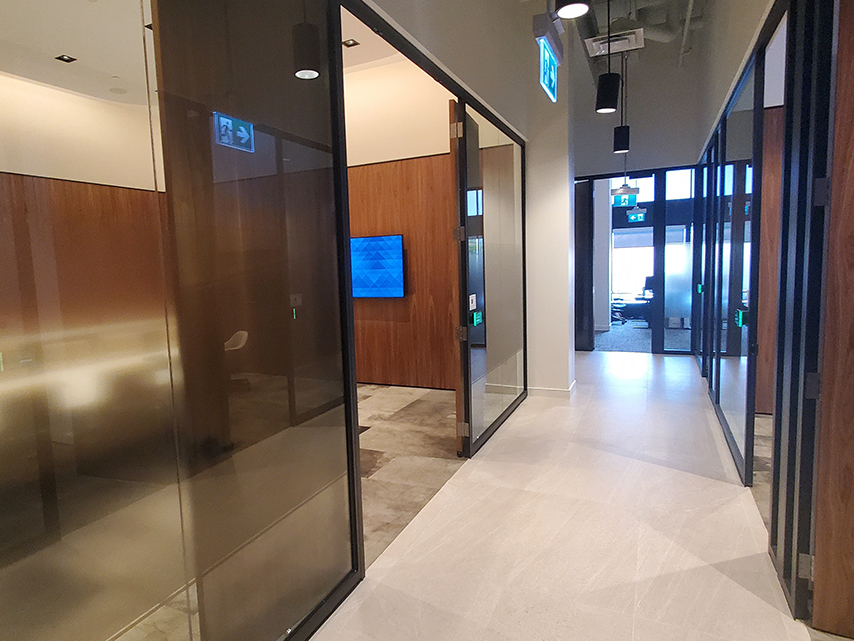How to Reduce Your Commercial Building's Carbon Footprint
With greater attention on sustainability, commercial property owners and their tenants are taking steps to reduce their carbon footprint. They've seen the value in eco-friendly improvements and want to invest. However, with the diverse variety of options on the marketplace today, deciding on the most effective solution is somewhat challenging.
Should they spend a substantial sum on a solar energy system? Or should they make a number of smaller adjustments? In truth, the answers to these questions will differ depending on the investor’s situation, and many times, they already have the means to lower their energy consumption — no money necessary.
A commercial tenant can decrease their carbon footprint with simple modifications around their workplace. Meanwhile, a property owner can make greater strides to reduce the environmental impact of the building’s operations. With that in mind, here are five changes professionals can make to reduce the emissions from their workplace.
1. Analyze the Organization
A carbon footprint analysis can provide a clear picture of a commercial tenant's environmental impact. With access to new insights, a tenant can address the pollution their organization generates and make the necessary changes. These changes range from simple to complex.
For example, a commercial tenant can choose to adjust their existing policies. If they work within the limitations of a strict budget, this may seem like the most appealing option. Commercial tenants can also perform a life cycle assessment, which has many of the same benefits.
2. Buy From Local Suppliers
When a tenant evaluates their carbon footprint, they often look within their organization. However, if they view the issue within a broader context, they'll see that transportation also has an effect on their overall emissions. The trucks and other vehicles which carry their goods and materials can prove detrimental.
Fortunately, tenants can easily reduce the amount of air pollution from that side of their business. When they partner with local suppliers for their commercial needs, they shorten the distance between their office and the vendor. By extension, they limit the carbon emissions from delivery.
3. Purchase Low-Flow Aerators
The restrooms in an office building account for as much as 37% of its total water consumption. Tenants can reduce this percentage with the installation of low-flow aerators, an eco-friendly addition which controls the flow of water from a faucet. This may not seem like a significant change, but the effect is dramatic.
With low-flow aerators, a commercial property has the potential to cut its water consumption by up to 50% each day. Over time, those water savings will drastically reduce water-related emissions and decrease a property's carbon footprint. That's a big change for such a small adjustment.
4. Upgrade the HVAC System
A company's HVAC system represents one of its primary sources of emissions. As context, HVAC comprises 40% of all carbon emissions, so it's vital to invest in the most efficient heating, ventilation and air conditioning equipment available. If this is outside the manager’s price range, they should focus on maintenance.
Beyond these measures, a property manager can schedule their heating and cooling systems to activate during pre-determined hours. When they let it run hotter or cooler during off-hours, they limit their energy consumption and lessen their carbon footprint. That said, this may or may not seem practical depending on the season.
5. Invest in Renewable Energy
Commercial property investors are often hesitant to consider an investment in renewable energy systems. They may not have the capital or financial resources for a complete company or building-wide switch, or they may be wary that the financial return isn’t worth the initial investment.
While this reluctance is rational, to a certain extent, advancements in energy storageand efficiency make renewable energy a more irresistible option than ever. Facilities managers can more easily manage electricity demand and maintain operation when a grid is facing problems. Plus, hybrid solutions allow property owners to guarantee power while still saving on energy costs.
Looking Toward the Future
Now more than ever, commercial property owners and tenants need to assess their building's carbon emissions. As the threat of climate change continues to escalate, everyday individuals will play an indispensable role in protecting the environment. Without their commitment, the planet is at risk.







